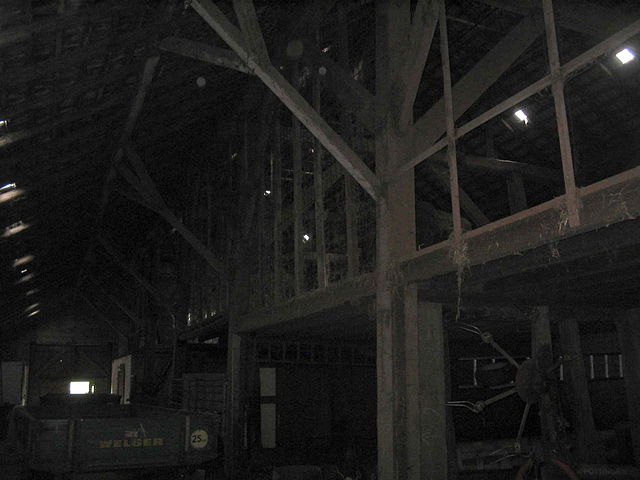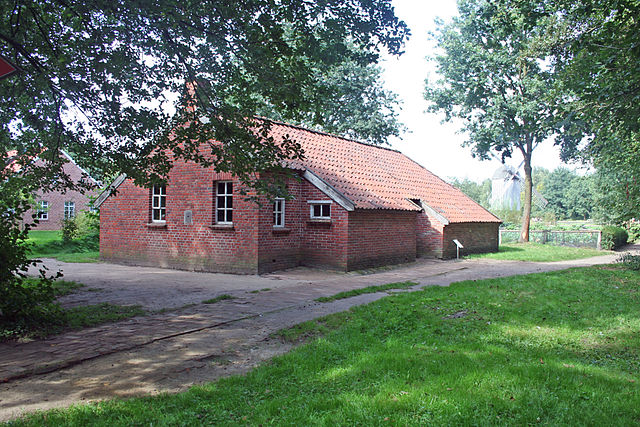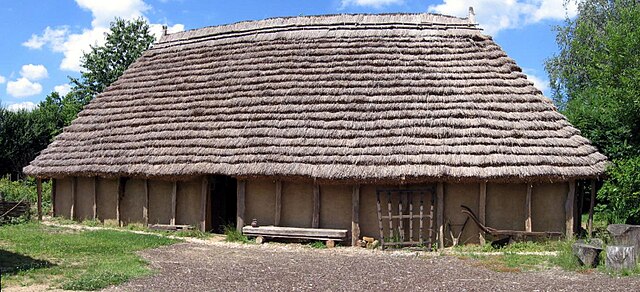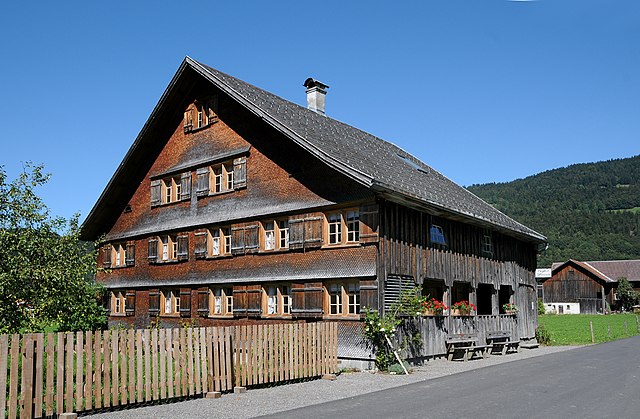A Gulf house, also called a Gulf farmhouse (Gulfhof) or East Frisian house (Ostfriesenhaus), is a type of byre-dwelling that emerged in the 16th and 17th centuries in North Germany. It is timber-framed and built using post-and-beam construction. Initially Gulf houses appeared in the marshes, but later spread to the Frisian geest. They were distributed across the North Sea coastal regions from West Flanders through the Netherlands, East Frisia and Oldenburg as far as Schleswig-Holstein. This spread was interrupted by the Elbe-Weser Triangle which developed a type of Low German house instead, better known as the Low Saxon house.
A Gulf house in the district of Leer - front and barn door
Gulf house in brick in the Wangerland. Back of house with barn door (right) and stable door (left).
Roof design of an East Frisian Gulf house from inside, seen from the threshing floor (Tenne)
Farm labourer's house at the Cloppenburg Museum Village
A byre-dwelling is a farmhouse in which the living quarters are combined with the livestock and/or grain barn under the same roof. In the latter case, the building is also called a housebarn in American English.
A reconstruction
A model
Bregenzerwälderhaus in Bezau, Vorarlberg (Austria)
Modern era byre-dwelling in Bavaria (Eckersdorf, Upper Franconia)








